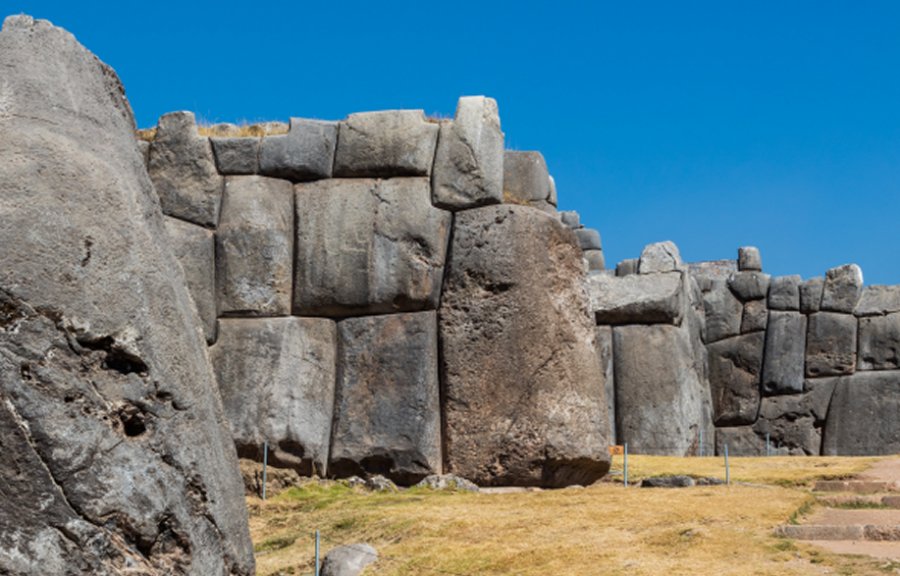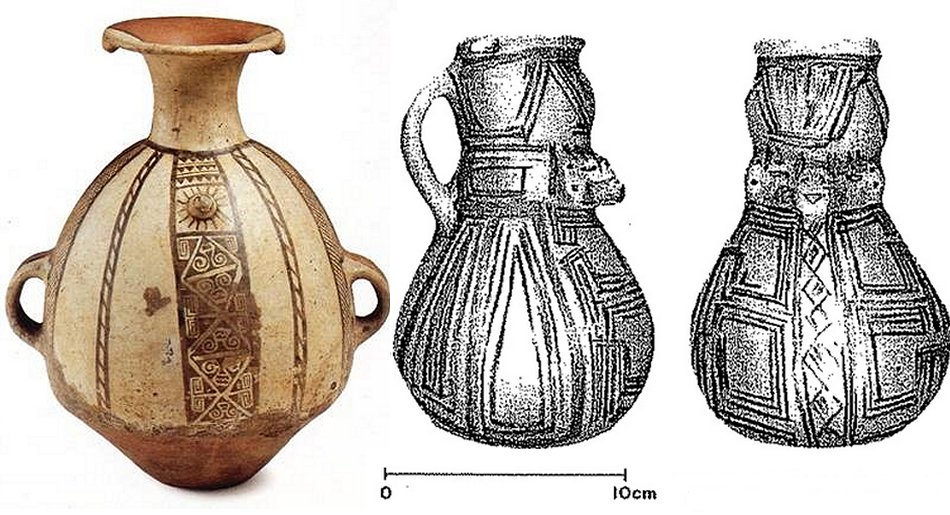Mysterious Killke Culture Of Peru: Did They Construct Sacsayhuaman?
A. Sutherland - AncientPages.com - Officially, the Killke culture (900 to 1200 AD) is credited for building Sacsayhuamán. However, Sacsayhuaman may still be hundreds or even thousands of years older than the Killke culture.
These people occupied the South American region around Cusco, Peru before the arrival of the Incas in the 13th century.
View of a row of corners of the walls of Saksaywaman, a citadel on the northern outskirts of the city of Cusco, the historic capital of the Inca Empire, today Peru. The first sections of the citadel were first built by the Killke culture about 1100 and expanded by the Inca from the 13th century. The dry stone walls are composed of huge stones, which boulders are carefully cut by workers to fit them together extremely tightly without mortar. Image Diego Delso - CC BY-SA 4.0
The Killke culture flourished during the Late Intermediate Period (approximately 1000 to 1470 AD) in what is now Cuzco, Peru.
It was Peru’s historical period characterized by crafts production, in which the Killke used semiprecious stones like turquoise and emeralds as well as wood, textiles, seashells. Their pottery also attested to their skills.
The pottery of the Killke people was often spherical with vertical strap handles and linear geometric decorations of black or black-on-red over a white or buff slip.
The Killke Culture And The Early Inca
The Killke people were skilled craftsmen. They built much of Cuzco that later became the capital of the powerful Inca empire. They are considered to be the so-called ‘early Inca’.
Left: Killke pottery style, found in Cuzco. Source; Right: Killke pottery examples (Bauer and Stanish 1990). Image source
Unfortunately very little is known about this period of time because neither the Killke people nor the Inca left any writings behind (they only had their famous ‘quipu’ records).
It is known, however, that many Killke settlements were later reused and further rebuilt by the Inca who arrived in the region.
Was Sacsayhuaman Constructed By Killke People?
They built the massive fortress, Sacsayhuamán, during the 12th century. Later, the fortress was used by the Inca, following their occupation of the region.
Could the Killke builders' skills be high enough to construct something such extraordinary as the massive fortress, Sacsayhuaman, which is officially dated to the 12th century?
Sacsayhuaman, located just outside of Cuzco, was a fortress of massive carved blocks of rock that fit flawlessly together. Researchers suggest that the original structure was built in the 1100s, which means three centuries earlier than Machu Picchu, by the Killke culture. They also believe that the Incas later made additions and suitable improvements to the original structures.
What remains today are mysterious long lines of rock, still at an unimaginable size for building. The stones are so huge that each one weighs about 107 metric tons.
Three gigantic, 1,500 feet long and 54 feet wide walls were erected near the city of Cuzco, Peru, at an altitude of over 3600 m (12,000 feet). The walls surround a paved area containing a circular stone structure that could be a solar calendar and other structures both on the surface and underground.
The structure was later used by the Inca, following their occupation of the region. It had both military and religious significance.
The 2007 – 2008 excavations uncovered a temple on the edge of the fortress, indicating religious as well as military use of the facility, and the ruins of two temples within the area of Sacsayhuamán, irrigation systems, and a roadway.
Sacsayhuaman Puzzle Is Far From Solved
“One problem we have with the archaeological record is that they seem to have a preconceived notion that the earliest culture in the Cuzco area, prior to the Inca, was the Killke. 2
The Killke occupied the region from 900 to 1200, prior to the arrival of the Inca. Carbon 14 dating of Sacsayhuamán, had demonstrated that the Killke culture constructed the fortress about 1100 AD. The Inca later expanded and occupied the complex in the 13th century and after.
Killke ceramics first were studied and described by John H. Rowe, (1918 - 2004), an American archaeologist and anthropologist, known for his extensive research on Peru, which focused especially on the Inca civilization. Rowe named the Killke culture while he studied Andean antiquity. However, he "incorrectly identified them as "early Inca". These vessels often are globular with vertical strap handles and have simple linear geometric decorations of black or black-on-red over a white or buff slip. 1
However, if the excavations were to proceed much deeper, evidence of earlier cultures could be present, says Brien Foerster in his book “Lost Ancient Technology Of Peru And Bolivia”.
Also, we have to remember what D. H. Childress wrote in his book “Ancient Technology in Peru and Bolivia”
“Sacsayhuaman may still be hundreds or even thousands of years older than the Killke culture. There seems to be no reason why building in the Cuzco and Sacsayhuaman area would have only begun in 1100 AD when the megalithic building had begun much earlier in other areas…” 3
Written by – A. Sutherland - AncientPages.com Senior Staff Writer
Copyright © AncientPages.com All rights reserved. This material may not be published, broadcast, rewritten or redistributed in whole or part without the express written permission of AncientPages.com
Expand for referencesReferences:
Project Gutenberg
D. H. Childress wrote in his book “Ancient Technology in Peru and Bolivia”
Brien Foerster, Lost Ancient Technology Of Peru And Bolivia
More From Ancient Pages
-
![Horses in the Eurasian steppes: Already 5000 years ago, they served pastoralists as a source of milk and a means of… [more] © A. Senokosov](https://www.ancientpages.com/wp-content/uploads/2021/09/pastoraliststeppe15-307x150.jpg) Milk Enabled Massive Steppe Migration – A New Study
Archaeology | Sep 24, 2021
Milk Enabled Massive Steppe Migration – A New Study
Archaeology | Sep 24, 2021 -
 Lost Ancient Pyramid City As Big As Manhattan Discovered In Mexico
Archaeology | Feb 17, 2018
Lost Ancient Pyramid City As Big As Manhattan Discovered In Mexico
Archaeology | Feb 17, 2018 -
 Lost Astronomical Treatise By Claudius Ptolemy Discovered
Archaeology | Mar 30, 2023
Lost Astronomical Treatise By Claudius Ptolemy Discovered
Archaeology | Mar 30, 2023 -
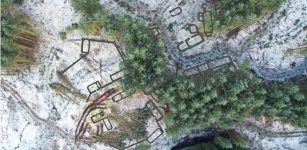 Ruins Of Post-Medieval Brunell Township Discovered In Glen Brittle Forest On The Isle of Skye
Archaeology | Feb 29, 2024
Ruins Of Post-Medieval Brunell Township Discovered In Glen Brittle Forest On The Isle of Skye
Archaeology | Feb 29, 2024 -
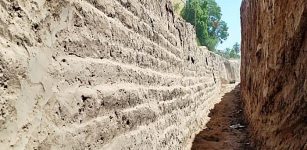 Ancient Mud-Brick Roman Ovens And Massive Wall Dated To Egyptian Late Period Unearthed In Luxor
Archaeology | Jun 26, 2020
Ancient Mud-Brick Roman Ovens And Massive Wall Dated To Egyptian Late Period Unearthed In Luxor
Archaeology | Jun 26, 2020 -
 Tooth Analysis Sheds Light On South Australia’s Early Colonial History
Archaeology | Jul 6, 2022
Tooth Analysis Sheds Light On South Australia’s Early Colonial History
Archaeology | Jul 6, 2022 -
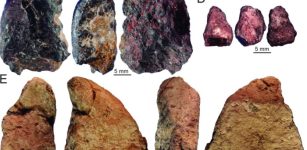 Homo Sapiens In China And What Happened When They Encountered Denisovans Or Neanderthals
Archaeology | Mar 4, 2022
Homo Sapiens In China And What Happened When They Encountered Denisovans Or Neanderthals
Archaeology | Mar 4, 2022 -
 On This Day In History: Heidelberg University Established – On Oct 19, 1386
News | Oct 19, 2016
On This Day In History: Heidelberg University Established – On Oct 19, 1386
News | Oct 19, 2016 -
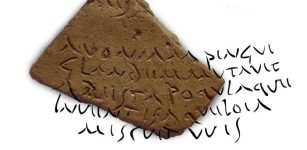 Incredible Discovery Of A Poem By Virgil On A Roman Oil Amphora
Archaeology | Jun 21, 2023
Incredible Discovery Of A Poem By Virgil On A Roman Oil Amphora
Archaeology | Jun 21, 2023 -
 Secrets Of The Cathars – Mysterious Manuscript Of Jesus And His Pre-Flood Language
Featured Stories | Jan 18, 2019
Secrets Of The Cathars – Mysterious Manuscript Of Jesus And His Pre-Flood Language
Featured Stories | Jan 18, 2019 -
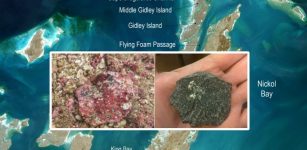 9,000-Years-Old Underwater Artifacts Found Off The Western Australia Pilbara Coast – Protect Flying Foam Passage Scientists Say
Archaeology | Jun 27, 2023
9,000-Years-Old Underwater Artifacts Found Off The Western Australia Pilbara Coast – Protect Flying Foam Passage Scientists Say
Archaeology | Jun 27, 2023 -
 World’s Oldest Hand And Footprints Discovered On The Tibetan Plateau Are 226,000-Year-Old!
Archaeology | Sep 15, 2021
World’s Oldest Hand And Footprints Discovered On The Tibetan Plateau Are 226,000-Year-Old!
Archaeology | Sep 15, 2021 -
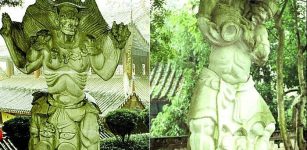 Spectacular Fengdu Ghost City Devoted To Afterlife
Chinese Mythology | Aug 22, 2016
Spectacular Fengdu Ghost City Devoted To Afterlife
Chinese Mythology | Aug 22, 2016 -
 Were The Viking Berserkers True Or Drug Addicted Warriors Fighting In Trance?
Featured Stories | Feb 3, 2015
Were The Viking Berserkers True Or Drug Addicted Warriors Fighting In Trance?
Featured Stories | Feb 3, 2015 -
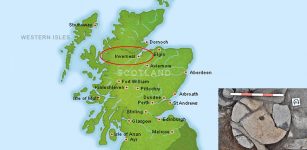 Mysterious Ancient Ruins Of Fortress Discovered In Scottish Highlands
Archaeology | Jan 16, 2018
Mysterious Ancient Ruins Of Fortress Discovered In Scottish Highlands
Archaeology | Jan 16, 2018 -
 On This Day In History: Alexander The Great Died In Babylon – On June 11, 323 BC
News | Jun 11, 2016
On This Day In History: Alexander The Great Died In Babylon – On June 11, 323 BC
News | Jun 11, 2016 -
 How Did St. Nicholas Become Santa Claus? – History, Legend And Tradition
Featured Stories | Dec 22, 2023
How Did St. Nicholas Become Santa Claus? – History, Legend And Tradition
Featured Stories | Dec 22, 2023 -
 Fomorians: Supernatural Race Of Giants Who Came From Atlantis
Celtic Mythology | Jul 18, 2017
Fomorians: Supernatural Race Of Giants Who Came From Atlantis
Celtic Mythology | Jul 18, 2017 -
 India: Plastic Surgery And Genetic Science – Found In Ancient Vedas – Were Practiced Thousands Of Years Ago
Ancient Technology | Oct 29, 2014
India: Plastic Surgery And Genetic Science – Found In Ancient Vedas – Were Practiced Thousands Of Years Ago
Ancient Technology | Oct 29, 2014 -
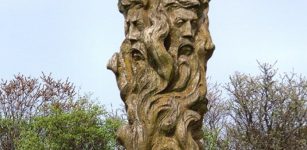 Svantevit – Four-Headed War God Of The Slavic Peoples Of Central Europe
Featured Stories | Sep 13, 2015
Svantevit – Four-Headed War God Of The Slavic Peoples Of Central Europe
Featured Stories | Sep 13, 2015

